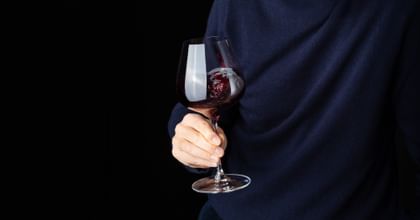Sommeliers Words of Wisdom
It's Not About Sizes – Why the Shape Matters!

Not all wine glasses are created equal—and contrary to popular belief, size isn’t the secret. The real difference? Shape. At RIEDEL, we’ve spent decades studying how form affects flavor, aroma, and the way wine feels on the palate. The result? A world of glasses designed not for decoration, but for transformation. Whether you’re savoring a rich Malbec, a crisp Sauvignon Blanc, or a delicate Champagne, the right shape elevates every sip. Let’s uncork the story of why wine glass shapes truly matter—and how they unlock the soul of your wine.
Wine Glass Shapes: More Than Just Aesthetic
When people think about wine glasses, most imagine something elegant and stemmed—perhaps tall, perhaps wide. But beyond the silhouette lies science. The shape of wine glasses determines how aroma is concentrated, how wine enters the mouth, and even how it feels on the tongue.
It’s not just about what looks beautiful on your table. It’s about bringing out the best in every bottle. Different wine glasses are crafted to match different varietals, allowing each one to perform at its peak—whether that means softening tannins, enhancing fruit notes, or tempering acidity.
Aroma, Taste, Balance
How Shape Impacts Every Sip
The moment wine hits the air, its aromas begin to unfold. This is where the bowl shape becomes essential. A wide bowl offers more surface area, allowing oxygen to interact with the wine and release its bouquet. A narrow rim, by contrast, focuses those aromas toward your nose.
Take a sip, and the influence continues. The shape of the rim guides how and where the wine lands on your tongue. A larger opening can allow a bolder pour—great for reds—while a tapered lip directs wine toward specific taste zones. A glass that delivers wine to the tip of your tongue might highlight sweetness. One that channels it to the sides can emphasize acidity. In short, wine glass shapes can dramatically alter your perception of flavor.
Why Different Wine Glasses for Different Grapes?
Wine is nuanced. So are grapes. That’s why we don’t believe in a one-glass-fits-all approach. The chemistry of each varietal is unique: Pinot Noir is delicate and aromatic. Cabernet Sauvignon is robust and tannic. Riesling is floral and acidic. Matching the right wine glass type to the grape ensures the wine shines as it should.
Different wine glass types enhance specific traits:
- RIEDEL Fatto a Mano Black Tie Burgundy Grand Cru: Designed to tame the acidity and highlight the fruit.
- RIEDEL Performance Cabernet/Merlot: Engineered to soften tannins and enhance body.
- RIEDEL Veloce Sauvignon Blanc: Keeps aromas focused and fresh.
These subtle differences mean your wine tastes exactly how the winemaker intended.
RIEDEL’s Legacy: Pioneers of Shape-Specific Design
RIEDEL has long been at the forefront of varietal-specific glassware. Our philosophy? The glass is the wine’s loudspeaker. Developed in close collaboration with sommeliers, winemakers, and sensory experts, every RIEDEL shape is backed by performance—and decades of research. From the iconic RIEDEL Sommeliers Series to the modern RIEDEL Veloce and RIEDEL Winewings collections, our glasses aren’t just vessels. They’re instruments of precision, enhancing your wine-drinking rituals one perfectly curved bowl at a time.
Elevate Your Wine with RIEDEL
From a casual glass after work to hosting a dinner party, choosing the right glass is essential. Our RIEDEL varietal-specific collections are crafted to elevate your wine, no matter the occasion.
Because with the right shape in hand, wine becomes more than just a drink—it becomes a revelation.
Locations


